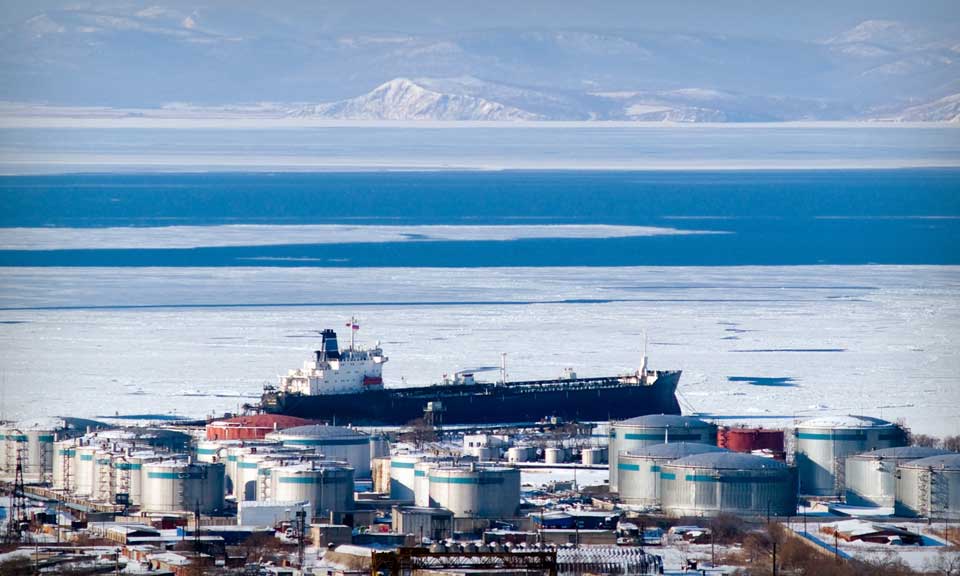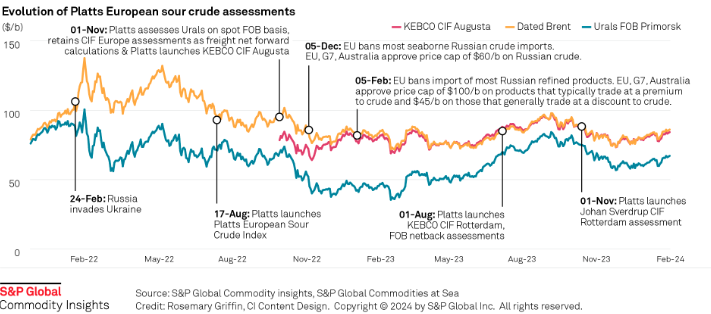China's refineries cut April throughput, lift product exports amid weaker local demand

China's refineries are to slash throughput in April and lift oil product exports from initial plans to compensate for falling domestic demand due to COVID-19 lockdowns, refiners told S&P Global Commodity Insight on April 8.
The country's financial center, Shanghai, a city of 25 million people, has gone into lockdown due to omicron variant outbreaks and there have been reports the lockdown could be extended into May. Other cities in northeast, east and south China also stay in alert mode.
The latest lockdown has compounded China's supply chain and logistical challenges; transportation has been disrupted, workers are in isolation, and construction work has been wound down or stopped altogether.
This situation is likely to continue while the Chinese government adheres to a zero-COVID policy.
As a result, 10 refiners from the 11 polled Sinopec and PetroChina refining sources said they have cut their April throughput by 30,000-100,000 mt from their initial planned volume or are going to reduce.
These include Sinopec's 14 million mt/year Shanghai Petrochemical, which has been locked down since late March. It is to lower throughput by 40,000 mt to 1.19 million mt in April.
"Shanghai's demand for oil products is drying out, product inventory is rising," a source with the plant said.
The neighboring 8 million mt/year Anqing Petrochemical plant has trimmed throughput several times since April 1 to get the current target of about 550,000 mt from an initial 650,000 mt.
Another neighbor, the 16 million mt/year private greenfield Shenghong Petrochemical has further delayed its startup, with no fixed commission schedule, given high oil prices coupled with weak product demand, according to a company source.
Down south in Guangzhou, oil product sales are also slow, despite the capital city of Guangdong being less affected by the latest wave of the pandemic. The 13.2 million mt/year Sinopec plant has cut throughput by 40,000 mt from planned to 990,000 mt in April, a refining source said.
In eastern China's Shandong province, independent refineries have even chopped their average utilization rate to 49.4% as of April 6, against 57.1% a month earlier as of March 9, according to local information provider JLC.
In northeast China, three of PetroChina's refineries in Liaoning province have reduced their April throughput by 30,000-50,000 mt from original plans, according to sources with the plants. The neighboring Jilin province is another epicenter of the current wave of COVID-19 spreading.
Analysts in Beijing warned that refineries may further lower throughput when demand is worsen.
In addition to throughput, PetroChina's refineries have also lifted product exports from initial estimations.
But the increase is likely to be capped due to limited export quotas and logistical restriction due to COVID-19 controls, analysts said.
One Dalian-based PetroChina refinery is to increase its gasoline exports in April from the initial plan of 32,000 mt to 130,000 mt, while the other PetroChina refineries in the same city will export 150,000 mt of gasoline this month -- compared with zero in its original plan, according to company sources.
Moreover, PetroChina's Guangxi Petrochemical is also likely to ship out some gasoline barrels.
PetroChina was initially estimated to export only 32,000 mt of gasoline in April.
"But lockdowns and movement controls ban driving activities, even during the Tomb-Sweeping Day holiday (April 3-5)," a company source said.
"Oil products stock is rising, forcing refiners to upward adjust their export plans, especially gasoline," said a product trader in East China.
However, Beijing slumped oil product quota awards by 55.9% year on year in the first-round allocation for 2022, at only 13 million mt, which caps exports in the month.
Market sources had initially estimated China to export 416,000 mt of gasoline and 140,000 mt of gasoil in April, S&P Global reported.

News
India's unwavering appetite for Russian crude has provided ample bandwidth to Middle Eastern sour crude suppliers to cater to the needs of South Korea, Japan, Thailand and other East Asian buyers. Even if OPEC+ decides to extend production cuts, East Asian refiners are confident they can secure adequate Middle East sour crude term supplies. View full-size infographic Also listen:

News
Russia's invasion of Ukraine has had a profound impact on sour crude export destinations, and increased the appetite for sweet crudes among European refiners. Platts methodology has evolved to reflect this changing landscape. Click here to see the full-size infographic.

News
Latest update: Jan. 30, 2024 A key OPEC+ advisory committee, co-chaired by Saudi Arabia and Russia, is set to meet online Feb. 1, with crude prices still stuck below the level that many of the alliance’s major producers need to balance their budgets. Traders will be seeking signals from the Joint Ministerial Monitoring Committee meeting on how long the bloc will keep the reins on its production and how it sees supply-demand fundamentals shaping up in the months ahead. Related story: OPEC+ monitoring committee prepares to meet as group battles sticky oil prices (Subscriber content) Click here to view the full-size infographic Compare hundreds of different crude grades and varieties produced around the world with Platts interactive Periodic Table of Oil .

News
Sumas spot gas down 90.6% year on year CAISO solar generation up 6 points in Dec US West power forwards are trending roughly 50% lower than year-ago packages on weaker gas forwards and above-normal temperatures forecast with El Nino weather conditions to linger into spring. El Nino conditions, which typically occur January through March, tend to bring more rain to the US Southwest and warmer-than-normal temperatures. The three-month outlook indicates a greater probability for above-normal temperatures across most of the Western US, with the exception of the Desert Southwest, according to the US National Weather Service's Climate Prediction Center. SP15 on-peak January rolled off the curve at $55.75/MWh, 79.4% lower than where the 2023 package ended, according to data from Platts, part of S&P Global Commodity Insights. The February package is currently in the low 50s/MWh, 70% below where its 2023 counterpart was a year earlier, while the March package is in the mid-$30s/MWh, 55.4% lower. In gas forwards, SoCal January rolled off the curve at $3.779/MMBtu, 97.9% below where the 2023 contract ended a year earlier, according to S&P Global data. The February contract is currently around $4.063/MMBtu, 78.9% lower than its 2023 counterpart at the same time last year, while the March contract is about $2.816/MMBtu, 63.2% lower. Gas plants burned an average of 1.815 Bcf/d in December to generate an average of 267.167 GWh/d, an analysis of S&P Global data showed. That's down 0.66% from November and a drop of 11.2 % from 2023. S&P Global forecast CAISO's gas fleet to generate around 220 GWh/d in February. In comparison, burning fuel at the same rate as February 2023 would consume 1.758 Bcf/d, a 6% decrease year on year. Spot markets In spot markets, power prices were down significantly from a year ago, when cold weather hit the region and drove up prices. SP15 on-peak day-ahead locational marginal prices averaged $43.49/MWh in December, 83% lower year over year and 11.2% below November prices, according to California Independent System Operator data. Helping pull down power prices, spot gas at SoCal city-gate was down 88.4% year on year and 40% lower month on month at an average of $3.554/MMBtu in December, according to S&P Global data. In the Northwest, Sumas spot gas was down 90.6% year on year at an average of $2.669/MMBtu. The decline in spot gas prices likely accounts for the lower average spot power prices month on month in December, said Morris Greenberg, senior manager with the low-carbon electricity team at S&P Global. Compared to a year earlier, CAISO population-weighted temperatures averaged 8% higher in December, resulting in 38.4% fewer heating-degree days, according to CustomWeather data. Fuel mix Thermal generation remained the lead fuel source at 46.1% of the total fuel mix in December, little changed year on year, while solar generation was up nearly 6 percentage points to average 14.7% of the mix, according to CAISO data. Hydropower remained strong, averaging 8% of the December fuel mix, 2 points higher than a year earlier. Total generation was down nearly 8% from a year earlier at an average of roughly 23.4 GWh/day, as peakload slipped 2% year on year to average 27.254 GW in December, according to CAISO data. In the Northwest, peakload dropped nearly 11% year on year to average 7.89 GW in December, according to Bonneville Power Administration data. Hydropower remained the lead fuel source at nearly 74% of the mix, followed by nuclear at 12.3%, thermal at 9.6% and wind at 4.3%. Following El Nino expectations of the Northwest for warmer temperatures and drier precipitation, BPA population-weighted temperatures in December were 10% above normal and 21.5% higher than a year earlier, leading to 27% fewer heating-degrees days year on year, according to CustomWeather data.